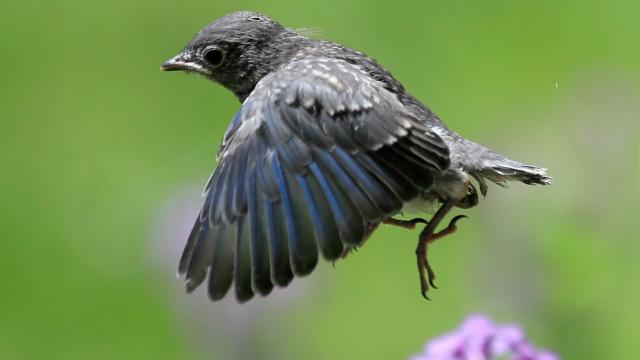The most commonly used pesticides in the world have been a disaster for bees. But new research shows they’re also bad news for birds, which are dying at an alarming rate. The findings, published in Nature Sustainability on Monday, show they’re responsible for a decline in American birds.
Neonicotinoids, a class of insecticides chemically related to nicotine, were first introduced to agriculture in the 1980s. They’re most commonly applied to seeds themselves and spread through the plants as they germinate and grow to protect against insects. But they’ve proven to be so harmful to bees and other insect populations that the EU banned their use in 2018. But in the U.S., thanks at least in part to a misinformation campaign on the part of the pesticide industry, there’s been a shift to use more and more of the dangerous chemicals even as the overall use of insecticides has been declining.
“Much of the attention to regulating [neonicotinoids] has been driven by concerns about their effects on bees and butterflies that feed directly on the pollen and nectar of plants,” Madhu Khanna, a professor of agricultural and consumer economics at the University of Illinois at Urbana-Champaign, said. “Our study shows that these pesticides also affect other organisms like birds that may directly consume the neoniccoated seeds or other organisms that have fed on these seeds/pesticides. Policy makers need to consider these effects in designing regulations so that neonic use is reduced particularly near bird habitats.”
The new study’s authors examined the effects of these insecticides on bird populations across the country from 2008 to 2014. Using data from the North American Breeding Bird Survey, the researchers identified county-level changes among four different groups of bird species groups: grassland birds, non-grassland birds, insectivorous birds and non-insectivorous birds. They then combined those figures with county-level data on pesticide use to tease out the link between neonicotinoids and bird survival rates.
It turns out use of the chemicals can be linked to declines in all of those groups of birds. Grassland birds (which rely on grassland habitats for nesting) and insectivorous birds (which eat insects, worms, and other invertebrates) saw the steepest impacts. The authors found that an increase of 220 pounds (100 kilograms) in neonicotinoid usage per county was associated with a 2.2 per cent decline in populations of grassland birds and 1.6 per cent in insectivorous birds. Khanna said this was due to birds feeding on both seeds treated with the pesticide as well as eating insects themselves who may have ingested it.
[referenced url=”https://gizmodo.com.au/2020/05/migratory-birds-are-failing-to-adapt-to-climate-change/” thumb=”https://gizmodo.com.au/wp-content/uploads/2020/05/27/obsmb3oqgw8omlu1ryju-300×168.jpg” title=”Migratory Birds Are Failing to Adapt to Climate Change” excerpt=”New research published in the Proceedings of the U.S. National Academy of Sciences on Tuesday shows that the climate crisis may be seriously messing with North American birds’ migration patterns, and the consequences could be dire.”]
Other pesticides are a problem for birds too, but not to the same extent. By comparison, increasing the use of a non-neonicotinoid pesticide by the same amount was only linked with an associated with a 0.05 per cent drop in grassland birds and a 0.03 per cent decline in non-grassland birds, insectivorous birds and non-insectivorous birds. The worst impacts on bird populations were found in the Midwest, Southern California and Northern Great Plains, where use of the chemicals increased the most.
To make matters worse, impacts of neonicotinoid pesticides accumulate, meaning that exposure over a longer period can have more severe implications. Based on knowledge of how neonicotinoid toxicity accumulates, the authors also estimated the pesticides impacts over time. For grassland birds, a 100 kg increase in neonicotinoid use per county in 2008 reduced the population of birds by almost 4 per cent that year and cumulatively by 9.7 per cent from 2008 to 2014. For insectivorous birds, those figures were 2 per cent and 4.2 per cent, respectively. The cumulative impacts on non-grassland and non-insectivorous birds were smaller but still notable.
Birds biodiversity has been windows. But the new study shows how the use of neonicotinoids has been contributing to that sharp decline.
This is bad news for us all. Birds help maintain sustainable population levels of different species, keeping ecosystems in harmony. Many also play an important tole in plant reproduction because they serve as pollinators and seed dispersers. So to protect the birds and ourselves, it’s probably time we retire the use of these dangerous insecticides.
